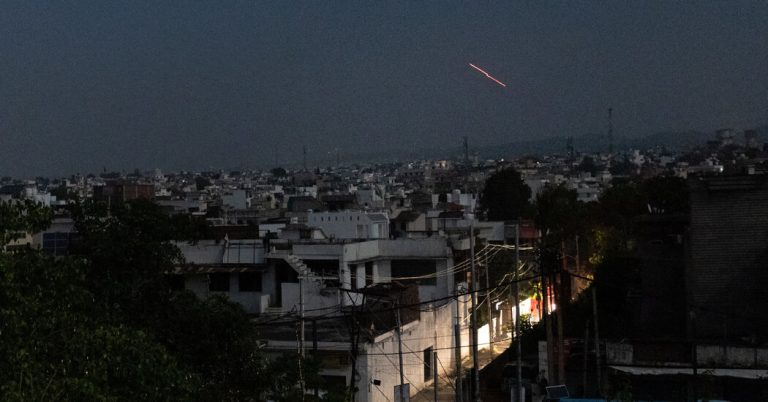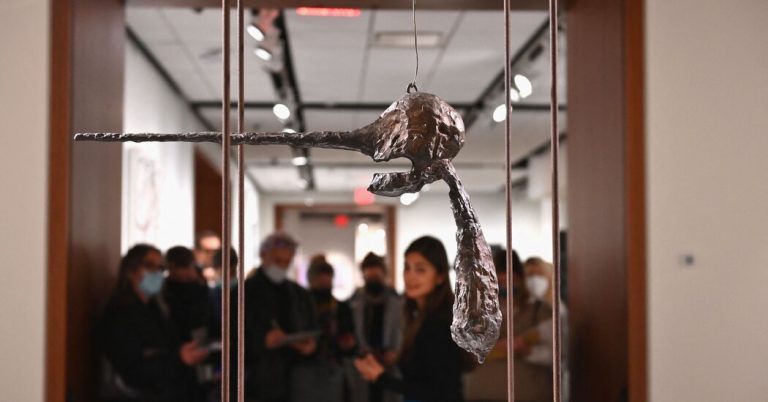In early 2020, Christine Dibble had recently retired from the federal government and was eager to travel more, but the coronavirus outbreak put those plans on hold.
Grounded at home in Washington Grove, Md., Dibble started to play around with a flight-tracking app, and it opened the skies for her.
Flightradar24 is one of several sites that compile public information about aircraft locations, flight paths, ownership records, altitude and more for display in an interactive map. People can see details about planes and where they’re heading almost anywhere in the world, including Antarctica.
Dibble, a former technology worker for the Environmental Protection Agency, had little knowledge about aviation, but the app satisfied her wanderlust and sparked curiosity about what was happening around her.
“The surprising thing about Flightradar to me is that it triggers my imagination,” Dibble told me. “What are people up there on that plane doing? Are they on vacation? On business?”
Peering at aircraft icons in the app, Dibble feels excited for tourists she imagines on the flight departing a nearby airport for Lisbon. She empathizes with parents when she sees the virtual image of an emergency helicopter on its way to a local children’s hospital.
“There are all these stories here,” she said.
Not long ago, the app showed that a small plane flying low near her home had taken off close to a Central Intelligence Agency training base. Dibble, her husband and daughter dreamed up scenarios of a Russian oligarch being whisked away in handcuffs.
Flight-tracking sites are another example of a technology that makes obscure information accessible and relevant for us mere mortals and helps connect us to others. It’s pretty amazing that we can Google whatever we’re curious about or video chat with friends far away. Following flights on the other side of the world is another marvel.
Flightradar24 started in the 2000s to market a Swedish ticket booking website, its director of communications, Ian Petchenik, told me. Harnessing a technology called Automatic Dependent Surveillance-Broadcast, the company’s founders and employees started installing ADS-B receivers on rooftops in Sweden to pick up radio signals of planes transmitting their locations to other aircraft and air traffic controllers.
The interactive map of air traffic proved more popular than the booking service. The flight-tracking service was born, said Petchenik.
Now there are about 34,000 Flightradar24 receivers that people around the world have agreed to put on their homes and commercial buildings and in other spots. Flightradar24 combines those signals with other information, including a database of aircraft owners and commercial airplane flight schedules, to assemble the data in a digital map.
You might be wondering: Is this a safety risk? Representatives for the Federal Aviation Administration told me that the agency limited the available data on aircraft associated with the Defense Department, Department of Homeland Security and the Justice Department. Air Force One does not appear in Flightradar24, for example. Owners of civilian planes can request limits on their travel data disclosures, too.
Petchenik believes it’s important for real-time information about activity in shared airspace to stay public.
Flightradar24 told me that usage of the tracking service spiked as the pandemic kept many would-be travelers like Dibble at home. And last week, some people couldn’t access Flightradar24 because so many users were following House Speaker Nancy Pelosi’s circuitous flight path to Taiwan, taken to navigate around potential conflicts with Chinese military planes.
There are other flight-tracking sites including FlightAware and ADS-B Exchange. But Jerry Dyer and Gilly Prestwood, who run Big Jet TV, a YouTube aviation specialty channel, said that Flightradar24 is the app of choice for both casual looky-loos and aviation buffs.
Some people use the app to estimate arrival times of friends and family, and anxious fliers use it to feel safer about plane travel, they said. News organizations have used flight-tracking services to hunt for clues from corporate executives’ travels. Dyer, Prestwood and Mindaugas Kavaliauskas, a photographer who published a book of images related to travel, said aviation hobbyists use apps to track famous or rare planes, gawk at 3-D satellite images from cockpits and debate the merits of one type of jet versus another.
After On Tech asked readers about technologies that stoked their creativity, Dibble emailed us about her affection for Flightradar24. I didn’t get the appeal at first, but I downloaded the app and my mind started to fire, too.
Now I imagine fancy people or tourists on helicopter flights hugging the virtual Manhattan skyline. Last week, I clicked on the icon of an airplane the app showed was miles above my neighborhood and saw that it was headed to Paris. Sigh. Lucky them.
Dibble knows that an app is no substitute for traveling in real life. She’ll soon be one of those people on a flight bound to Lisbon that she’s been eyeing in Flightradar24. But she still looks at the app several times a day.
“It’s a sense of connection to the larger world,” she said.
Before we go …
-
Russian propaganda thrives in languages other than English: Governments and internet companies clamped down on Russian government propaganda after the country invaded Ukraine. But my colleagues Steven Lee Myers and Sheera Frenkel found that Russian state sources were still using social media in Spanish and Arabic to mislead people about the war, undermining the global campaign to isolate and punish Russia.
Related: Online rumors, hate speech and false information are distorting the elections in Kenya, my colleague Abdi Latif Dahir reported.
-
Internet networks are a battleground in the war: My colleagues Adam Satariano and Scott Reinhard described how Russian authorities rerouted mobile and internet data in occupied cities in Ukraine through Russia’s censored networks. Ukrainian officials said the internet occupation is isolating people from their loved ones and blocking access to essential information.
-
Is “realness” just another form of performance? BeReal, an app that nudges people to snap a selfie and a photo using the rear-facing camera at an unpredictable time each day, has become popular among young people as an antidote to the pressures of social media perfection. In Wired, the social media researchers Brooke Erin Duffy and Ysabel Gerrard traced the history and psychology of false promises of “authenticity” peddled by corporations.
Hugs to this
You must read Linda Qiu’s article about Hair-E and other beagles putting their noses to work for Customs and Border Protection. They sniff out prohibited foods or plants to prevent them from entering the United States.
We want to hear from you. Tell us what you think of this newsletter and what else you’d like us to explore. You can reach us at ontech@nytimes.com.
If you don’t already get this newsletter in your inbox, please sign up here. You can also read past On Tech columns.










